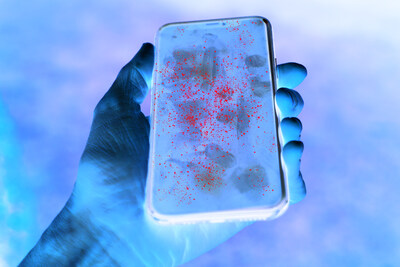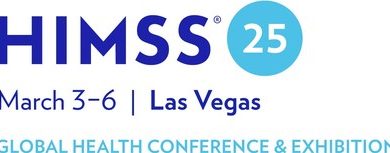
With the COVID-19 pandemic, hygiene awareness soared, but one major germ carrier was, and still is, overlooked: our phones. Studies show most mobile phones carry far more bacteria than toilet seats. Swypes, a new phone-cleaning brand, is offering an easy solution to disinfect the one thing we touch most.
CHICAGO, Oct. 13, 2025 /PRNewswire/ — Our phones are practically glued to our hands—yet unlike our hands, phones rarely get cleaned. A widely cited study from the University of Arizona found that the average cell phone carries ten times more bacteria than the typical toilet seat.(1) This leads to what experts call the “clean hands, dirty phone” paradox: no matter how often we wash, we’re constantly recontaminating ourselves with our filthy devices.
“If hands were the battleground of 2020, phones are the battleground of 2025,” Swypes Founder and CRO Josh Bilow said. “It’s time for public health campaigns, workplaces, and households to treat them that way. The toilet seat comparison is more than just an ‘ick factor’, it’s a genuine health risk.”
Your Cell Phone’s Dirty Secret
Toilet seats are made of smooth, easy-to-clean surfaces and are frequently disinfected. Yet phones and their cases travel everywhere—into bathrooms, onto airplane tray tables, gym equipment, subway seats, school surfaces, restaurant tables, and even into beds—often without a second thought. The warmth from their processors and the moisture from hands and breath create the perfect conditions for bacteria, making phones potential carriers of Staphylococcus, E. coli, and methicillin-resistant Staphylococcus aureus (MRSA).”(2)
“We touch our phones dozens, sometimes hundreds, of times a day, then touch our faces, mouths, or food without realizing it. Even good hand hygiene habits can’t counteract what happens when you grab a contaminated phone,” Bilow said.
The risk goes beyond bacteria. A systematic review in BMJ Global Health found that mobile phones in healthcare settings were often contaminated with SARS-CoV-2 RNA, showing how viruses can persist on phone surfaces and may contribute to its spread. (3) Other studies have detected influenza A/B, norovirus, and other respiratory pathogens—underscoring the role phones can play in spreading illness.
Handling New Hygiene Habits
The truth is: most people rarely – if ever – sanitize their phones. Traditional cleaners aren’t ideal: Bleach-based cleaners can damage phone coatings, and many disinfectant wipes are not designed for delicate electronics. Swypes has developed an individually packaged wipe built specifically for cleaning phones and setting new habits. Infused with 70% isopropyl alcohol (IPA) and a gentle, cloth-like material, they clean without soaking or damaging your devices. “Tech tools like phones should not be cleaned with just anything,” Bilow said. “Seventy percent IPA is the right cleanser; it protects against germs and pathogens without degrading screens and cases. The same goes for iPads, smartwatches, and other screens. Higher concentrations can be too harsh. We want people to have an easy, portable solution that serves as more than just a hygiene tool—it’s a behavioral shift.”
Swypes isn’t alone in calling for a reevaluation of phone safety standards. Both Apple and Samsung recommend 70% IPA for device cleaning, while health experts from Northwestern Medicine warn that phones pick up oils, dirt, and germs from high-touch environments—all of which transfer back to our faces and hands.(4,5,6) And because many people eat while using their phones, they create a near-perfect vector for microbial moving from surface to mouth.
The stakes are high. “With the rising threat of antimicrobial resistance and the annual return of flu and norovirus season, ignoring this hygiene blind spot is not careless, it’s risky,” Bilow said.
About Swypes
Swypes is more than a phone wipe — it’s a movement to close the biggest gap in modern hygiene. Founded on the belief that health starts with the things we touch most, Swypes is on a mission to make phone cleaning as second-nature as handwashing. Our vision is a world where the simple act of swiping a screen doesn’t mean spreading illness.
Built on science, designed for daily life, and backed by global health research, Swypes offers safe, effective wipes that protect both people and their devices. By targeting phones — today’s most overlooked germ carriers — Swypes empowers individuals, workplaces, and communities to build healthier habits and safer environments.
Learn more at Swypes.
References
- Gerba, Charles P., et al. “Your Cell Phone Is 10 Times Dirtier Than a Toilet Seat—Here’s What to Do About It.” University of Michigan Institute for Healthcare Policy & Innovation, 2023. ihpi.umich.edu/news/your-cell-phone-10-times-dirtier-toilet-seat-heres-what-do-about-it
- “Can Your Phone Make You Sick?” Northwestern Medicine HealthBeat, 2024. nm.org/healthbeat/healthy-tips/can-your-phone-make-you-sick
- Olsen, Mette, et al. “Mobile Phones and Nosocomial Infections: A Systematic Review.” BMJ Global Health, vol. 5, no. 4, 2020, e002505. hgh.bmj.com/content/5/4/e002505
- “Cleaning Your iPhone.” Apple Support, Apple Inc., 2025. support.apple.com/en-us/108765
- “Galaxy S24 Ultra Support.” Samsung Electronics, 2025. samsung.com/global/galaxy/galaxy-s24-ultra/
- “How Dirty Is Your Cell Phone?” Health Matters, NewYork-Presbyterian, May 2020. healthmatters.nyp.org/how-dirty-is-your-cell-phone/
Media Inquiries:
Karla Jo Helms
JOTO PR™
727-777-4629
Jotopr.com
View original content to download multimedia:https://www.prnewswire.com/news-releases/the-next-public-health-crisis-filthy-phones-are-dirtier-than-toilet-seats—and-more-dangerous-302582082.html
SOURCE SWYPES




